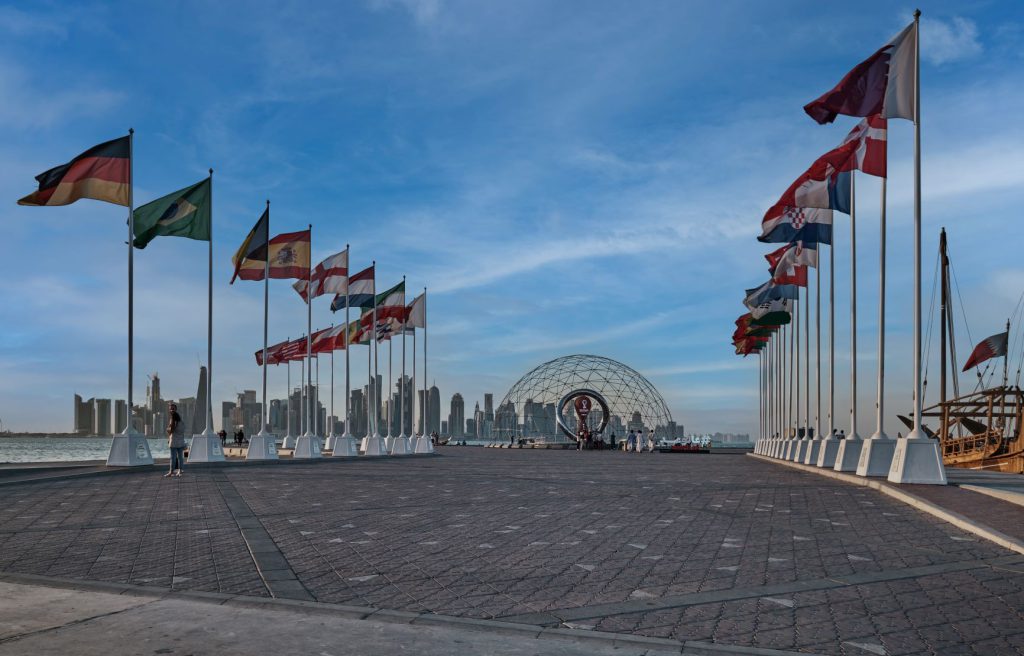Is there a secret to longevity? This health expert says 1,000% yes
In the era of social media, post-COVID, and with mental health at the forefront, a shift is taking […]

With each edition of the World Cup, there are innovations and changes compared to previous editions. Some, have clear improvements and advances over previous finals, others… A matter of taste. So far, there hasn’t been an edition of the World Cup that hasn’t brought something new compared to the previous one. This will obviously continue with this autumn/winter edition in Qatar.
But first, let’s look at the most important changes in each World Cup.
WORLD CUP 1934
– the first edition where participating teams needed to qualify to reach the final tournament
– the first (and only) World Cup in which the defending champions did not participate. Uruguay boycotted the final tournament in revenge for the fact that several European teams refused to participate in the previous edition, held in Montevideo.
– first World Cup to be played in several cities instead of just one: 8
WORLD CUP 1938
– was the first World Cup in which host France and defending champion Italy qualified automatically
– for the first time, players wore numbers on their shirts at a World Cup
WORLD CUP 1950
– the first (and only) final tournament in which the champion was not decided in a single match
– the format was changed from the previous two editions, where matches were played on a knockout basis. This time the teams were divided into groups to increase the number of matches played.
– first World Cup to be attended by TV cameras
1954 WORLD CUP
– the first World Cup to be widely televised
– first World Cup to introduce extra time in the event of a draw
1962 WORLD CUP
– the first World Cup to have a tie-breaker between teams tied on points on goal difference
WORLD CUP 1966
– the first World Cup to use replays in the televising of matches
– the first final tournament where FIFA banned the naturalisation of players from other countries
– first final tournament with doping control
– the first World Cup to have an official mascot: “Willie, the Lion”.
WORLD CUP 1970
– the first World Cup to be hosted on a continent other than Europe and South America
– first World Cup to be broadcast in colour on TV
– the first World Cup where changes were allowed
– the first World Cup to introduce “cards”
WORLD CUP 1974
– the first in which the Jules Rimet Trophy was no longer awarded to Brazil but the new trophy, represented by two men holding the globe
WORLD CUP 1978
– for the first time, more than 100 nations entered the preliminaries to qualify for the World Cup
WORLD CUP 1982
– the first edition to introduce penalty shoot-outs as a means of deciding the outcome of extra time
– the first edition with 24 teams as opposed to 16
WORLD CUP 1986
– Mexico became the first country to host more than one World Cup
WORLD CUP 1990
– first World Cup final tournament broadcast in High Definition on TV
– the first World Cup (after 1938) in which FIFA formed the “team of the tournament”.
– the first World Cup to have an “official anthem” of the tournament
WORLD CUP 1994
– for the first time 3 points were awarded for the victory
– yellow cards accumulated in the groups were cancelled in the knockout stages for the first time
– referees were allowed to wear colours other than black
– for the first time, players were obliged to have their names printed on their shirts in addition to their numbers
WORLD CUP 1998
– first final tournament with 32 teams instead of 24
– for the first time the golden goal rule was used in extra time
– electronic scoreboards showing changes and extra minutes appeared for the first time
WORLD CUP 2002
– the first final tournament hosted by two countries instead of one and the first final tournament held in Asia
WORLD CUP 2006
– for the first time, defending champion Brazil did not receive an official place in the final tournament
WORLD CUP 2010
– the first World Cup final tournament to be held in Africa
WORLD CUP 2014
– referees used spray paint for the first time to mark where the wall should stand
– the first final tournament to use Goal Line Technology
– the first World Cup to have hydration breaks at half-time
WORLD CUP 2018
– the first World Cup at which all 209 FIFA eligible members entered the preliminary qualifying rounds for the final tournament
– the first World Cup final tournament to use the VAR system
– for the first time at a final tournament a fourth change was allowed in extra time
Now that we’ve seen what changes and firsts we’ve had at every World Cup in the past, let’s see what innovations await us at the World Cup in Qatar.
1. 26-player squads instead of 23
Usually, at World Cups, each national team had a squad of 23 players. However, in this World Cup, squads of 26 players are allowed.
Previously, this feature was applied at the Copa America and the European Championship. This change was made to give teams room to move during the Covid-19 epidemic.
2. Five substitutions
Previously, only three substitutions were allowed. At the previous edition, a fourth substitution was allowed, but only in extra time. However, after the Covid-19 pandemic, a practice was introduced allowing 5 substitutions in each match. It is precisely this change of five substitutions that is a brave one, but actually makes the game more interesting.
The decision to change the five substitutions at the World Cup in Qatar was announced in June by the Council of the International Football Federation.
The original reason for the change was to protect players amid the pandemic. The change is now widely adopted in club football.
In addition, another benefit of this change is that it will provide managers with an additional tactical tool to be applied at the World Cup.
3. Female referees
Here’s another novel move. For the first time at the FIFA Men’s World Cup, fans will be able to see female referees. Out of a total of 36 centre referees for this tournament, three are women.
The female referees are Yamashita Yoshimi, Stephanie Frappart and Salima Mukansanga.
Speaking of assistant referees, Karen Diaz Medina, Neuza Back and Kathryn Nesbitt are also three of the 69 assistant referees.
4. Semi-automatic offside technology
For the first time at a final tournament, the 2022 FIFA World Cup in Qatar will take a bold step by adding the use of semi-automated offside technology.
Gianni Infantino, FIFA President, said, “Semi-automatic offside technology is an evolution of VAR systems that have been implemented around the world.”

In the era of social media, post-COVID, and with mental health at the forefront, a shift is taking […]

With its fast speeds and revolutionary potential, 5G stands out as a noteworthy milestone in the field of […]